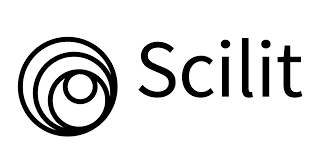Visual Search Abilities in School-Age Children
Tinelli F1*, Pecini C1, Mazzotti S1, Guzzetta A1, Bertini C2 and Cioni G1,3
1Department of Developmental Neuroscience, Stella Maris Scientific Institute, Pisa, Italy
2Center for Studies and Research in Cognitive Neuroscience, University of Bologna, Italy
3Department of Clinical and Experimental Medicine, University of Pisa, Italy
Submission: March 23, 2019; Published: April 23, 2019
*Corresponding author: Francesca Tinelli, Department of Developmental Neuroscience Stella Maris Scientific Institute, Pisa, Italy viale del Tirreno, 331 - Calambrone-Pisa- Italy
How to cite this article: Tinelli F*, Pecini C, Mazzotti S, Guzzetta A, Bertini C and Cioni G. Visual Search Abilities in School-Age Children. Psychol Behav Sci Int J. 2019; 11(3): 555815. DOI: 10.19080/PBSIJ.2019.11.555815
Abstract
Visual search is defined as the capacity to find a target among distracters. The aim of this study is to provide information about distribution of attention in both visual hemifields and furnish information regarding speed and accuracy according to age of subject by means of a new computerized visual search battery of tests that can be used from 1st to 8th grade of primary school. 208 Italian children, aged between 6 years and 13 years, participated in the study. This battery may be useful in testing efficiency of visual field exploration also in children with several developmental disorders.
Keywords: Visual Search; Visual Hemifield; School-Age Children
Introduction
Visual search (VS), defined as the capacity to find a target among simultaneously presented distractors [1], is of great relevance in the development of important adaptive functions such as environment exploration, perceptual processing, spatial cognition, literacy acquisition and other aspects of more complex everyday behavior [2]. Several visual abilities, such as foveal fixation and saccadic movements, attentional and perceptual processes involved in object recognition and spatial localization, are required in visual search tasks. Among these factors, a relevant role in visual search is played by visual spatial attention. Often described as a spotlight, a filter channel or a zoom lens, visual spatial attention refers to the ability to distribute attention resources across the visual field and select a particular area to process relevant information and filter out the rest [3].
By means of different experimental paradigms, VS has been particularly investigated in early childhood, in preschool and school-entrance age and in adulthood and in relation to aging processes [4]. There is agreement that visual search proficiency increases from childhood to adolescence, peaks in young adulthood, and then decreases in late [4-6]. Although this pattern confirms common views of lifespan cognitive development as U-shaped [7,8], it may be accounted not only by a general rise and fall in speed of information processing but also by the differential contribution of more specific and age-related attentional subprocesses involved in visual search tasks [4,7,9-11]. Studies on infants as young as 18 months, provide evidence that processes underlying visual search emerge hierarchically during infancy period and, once they appear, are qualitatively age invariant. For instance, 36 month old children exhibited the same dichotomy as adults on feature-search tasks in comparison to feature-conjunction tasks [12]. Nevertheless, significant changes are observed by comparing 2 and 3 year old children: younger typically developing toddlers were generally slower, less systematic and less accurate than older toddlers, with greater vulnerability to manipulations of target salience and display size [13].
Further studies on older children show that visual search tasks are mastered by age of six, however with considerably variability in accuracy and a progressive decrease in the time of task execution [14,15]. Child cognitive development from about 6 years onward influences particularly attentional top-down control, while it has negligible positive effects on stimulus-driven performance. Over the course of development, voluntary adjustment of attentional focus skills plays, in fact, a significant role in efficiency of visual field exploration [16]. Studies investigating development of attention orienting mechanisms [17] show a progressive increase with age in adjusting spatial extent of attentional focus and in voluntary attentional “flexibility” skills. For example, 6 year old children have been found to be more distracted by task-irrelevant stimuli than older children and adults [16,18-20] and to experience more difficulty as the distance between distractors decreases [21].
Similarly, the ability to integrate information over space is more difficult for children than for adults as the distance between stimuli increases [19,21]. Moreover, studies designed to further examine attention orienting mechanisms, show specific laterality effects, with visual field differences in response time which progressively change over the course of development. Children gradually move from a right to a left field advantage, showing in early adolescence a higher efficiency in automatic orienting spatial attention in the left hemifield as observed in adult age [17].
Taken together, it appears that development of attention subfunctions involves a complex pattern of change, with some aspects exhibiting significant change (i.e. selectivity and processing speed) and others exhibiting remarkable stability throughout life [5,22]. An accurate knowledge of VS developmental trajectories appears to be essential in evaluating visual search skills in the case of congenital or acquired visual defects which are frequently described in several neurological and neuropsychiatric disorders [23-25]. However, despite the relevant effects of visual search impairments on several cognitive domains and daily-life activities [26,27], clinical practices lack standardised and ecological diagnostic tools. Usually neuropsychological assessment is based on paper and pencil tasks (i.e. cancellation, line-bisection) which imply the integration of motor control, sustained attention and fine perceptual skills that are frequently impaired in developmental neurological diseases. Thus, final measures often do not differentiate among these underlying processes and between separate performance parameters such as accuracy and speed.
Moreover, stimuli are often presented on A4 (21x30 cm) paper which hardly reproduces visual field, masking eventual differences between the two hemifields and underestimating the effects of visual search deficits in everyday activities. Finally, although different tests and normative data are available for different age samples, very few instruments have been systematically administered throughout school-age period. These characteristics may reduce the informative power of VS tasks in defining neuropsychological profiles and indications for treatment.
The aim of this study is to provide information about distribution of attention in both visual hemifields according to age of subject and to provide information in terms of speed and accuracy always based on age by means of a new computerized visual search battery that can be used from 1st to 8th grade of primary school. Influences of motor-executive impairments, visual-perceptual difficulties and attention weakness (i.e. habituation effect) have been considered in the paradigm construction with an attempt to reduce the contribution of these cognitive processes on visual search performance.
Material and Methods
Subjects
208 Italian children (110 females and 98 males), aged between 6 years and 9 months and 13 years and 10 months, participated in the study. Their clinical history was negative for neurological disorders and learning difficulties. The sample included eight grade levels, from first year of primary school to last year of secondary school. Handedness was established by asking teachers and observing spontaneous hand use: 196 children were classified as right handed and 12 left-handed (Table 1). Parents and school teachers gave their informed consent to allow children to participate in study.

Visual Search Battery
This battery consisted of three tests, all modified from Zhil [27], presented in a set order: The Apple test, Frog test and Smile test. The three types of targets differed in terms of “pop-out gradient”, with Apple differing from distractors for colour, Frog for colour and shape, and Smile for minor enclosed features (Figure 1). Children were shown stimulus arrays (52° x 45°, horizontally and vertically respectively) projected on slides at a distance of 120 cm and were required to actively explore the visual field by using only eye and not head movements to search for visual targets. They had to report the presence of target, by pressing a ‘yes’ response key if the target was present and a ‘no’ response key when absent. Correct responses and reaction times (RTs) for each hemifield were recorded.
Apple Test
Each stimulus array contained 10 stimuli, randomly distributed over array. The stimuli consisted of red apples, projected on a black background. Children were instructed to fixate a red cross located in the centre of the slide and to search, after the disappearance of the cross, for a “yellow apple” embedded among the “red apples”. Ten trials were presented: eight trials in which the target was present (4 in right hemifield and 4 in left one) and 2 in which the target was absent (Catch Trials, CT).
Frog Test
Each stimulus array contained 13 stimuli, randomly distributed over the array. The stimuli consisted of green trees, projected on a black background. Children were instructed to fixate a red cross located in the centre of the slide (i.e. fixation point) and to search, after the disappearance of the cross, for a “frog” embedded among the “trees”. Eleven trials were presented: eight trials in which the target was present (4 in right hemifield and 4 in left one) and 3 in which the target was absent (CT).
Smile Test
Each stimulus array contained 9 stimuli, randomly distributed over the array. The stimuli consisted of little white faces with a smiling mouth, projected on a black background. Children were instructed to fixate a red cross located in the centre of the slide (i.e. fixation point) and to search, after the disappearance of the cross, for a “sad face” embedded among “smile faces”. Ten trials were presented: eight trials in which the target was present (4 in the right hemifield and 4 in the left one) and 2 in which the target was absent (CT). For Target Trials, median reaction times and number of errors (omissions) were measured for each stimulus (Apple, Tree, Smile) and hemifield (Left and Right). Two total scores were then computed for accuracy (total number of errors) and speed (mean of the median RTs obtained for each target type). Reponses to Catch Trials were not analysed as they were included in the test aimed at discouraging children from pressing “yes” key before true identification.
Modified-Trail Making Test

A computerized version of Trial-Making Test, modified (TMTm), was administered to all subjects in order to verify the relation between visual search performance, mostly involving pre-attentive processes, and voluntary attentional skills required by a visual-motor tracking task. Subjects were presented with the same procedure used for VS tasks and with a matrix of numbers projected on the black screen and requested to indicate by means of a laser pointer, as fast as possible, all the number in ascending order. Eight trials were administered for each subject (Figure 1).
Statistical Analysis
Data were analyzed by means of parametric statistics when the assumptions of normality were met (p<.05). Two mixed Analysis of Variance were used to investigate effects of School Grade (between factor: 8 levels), Visual Hemifield (within factor: 2 levels) and Target type (within factor: 3 levels) on number of omissions and median RT. School grade effect was investigated on TMT performance (response speed) by a one-way between ANOVA. In order to investigate the relation between visual search test and TMTm performances, a Spearman correlational analysis was carried out.
Results
(Table 2) Overall, subjects performed test accurately as mean number of errors, computed for each stimulus type and grade, reached 0.71 for target trials. Concerning accuracy, Mixed Analysis of Variance (Grade x Target x Hemifield) on the number of omissions showed significant effects of target type and hemifield while grade was not significant. Stimuli differed for difficulty (F(2, 400) =30.88, p<0.000), with a higher number of omissions for Smile targets in comparison to Apple and Frog ones. The significant effect of hemifield consisted in a lower number of errors when stimulus was presented in left hemifield rather than right one (F(1, 200) =26.11, p<0.000); nevertheless this difference varied according to stimulus (target by hemifield interaction, F(2, 400) =4.7, p<0.05) with a significant left hemifield advantage for the Frog (t(207)=2.1, p<0.05) and Apple (t(207)=5.2, p<0.000) targets but not for the Smile ones.
In terms of response speed, Mixed Analysis of Variance (Target x Hemifield x Grade) on median RTs, confirmed the significant effects of target (F(2, 396)=786.75, p<0.000) and hemifield (F(1, 198)=24.47, p <0.000): longer RTs for Smile, in comparison to Apple and Frog stimuli, and for right, rather than for left hemifield, were found starting from first grade. Consistent with the pattern found for accuracy, the effect of target significantly interacted with hemifield (F(2, 396)=13.98, p<0.000). Paired t-tests on RTs between right and left hemifields showed a significant left hemifield advantage for Apple (t(207)=8.4, p<0.001) and Frog (t(207)=6.3, p<0.001) targets but not for Smile ones.
A significant grade effect was also found: children improved response speed revealing a significant reduction in RTs with higher school grade (F(7, 198)=20.07, p<0.000). Post-hoc comparisons (Bonferroni correction) suggest a three-phase trajectory: children attending first grade of primary school showed the slowest reaction times while children from second to fourth grade tended to differ only from those of secondary school and no further differences were observed after fifth grade Figure 2.


Trial Making Testm performances and correlations with VS
Considering accuracy of performances at TMTm, a ceiling effect was observed in all grades as no child committed errors; thus, only response speed was statistically analysed. One-way analysis of Variance on median RTs showed a significant reduction of RTs with age (F (7, 199)=39.49, p <0.000) confirming a threephase trajectory similar to the one observed for the VS battery: a first significant change was observed starting from third grade of primary school followed by a further significant RT reduction starting from secondary school. As expected, a significant positive correlation between TMTm and VS speed was found for each target type and for total VS reaction time (r value ranging from 0.40 to 0.65, p <0.0001).
Discussion
In this study a new computerized Visual Search battery was standardised for an Italian sample of normally developing children aged 6-13 years. Stimuli and procedure were specifically chosen in order to limit the effect of other cognitive and executive factors and to provide an ecological tool useful for clinical practice. Presentation of stimuli on slides projected at 120 cm instead of the canonical “paper and pencil” modality tried to reproduce the visual search demands of a real visual field [28] and allowed for better gathering of separate measures from the two hemifields. By presenting a new trial for each target, rather than searching for different targets in the same matrix, as visual search tests usually require, we aimed at reducing the use of endogenous mechanism of sustained attention and at minimising the contribution of oculo-motor efficiency.
The three types of targets differed in terms of “pop-out perceptual gradient”, with the Frog target differing from distracters in two global features, colour and shape, the Apple only in one global feature, colour, while the Smile differed from distracters in minor enclosed features. These stimuli characteristics were assumed to affect visual discrimination efficiency of visual search processes, with perceptively salient targets, such as the Frog and the Apple, which were easier to pop out among distracters and more independent from the total number of stimuli [29]. This assumption was confirmed by finding that VS processes were affected by stimulus type, with a more efficient performance in the case of global analysis demanding targets (Frog, Apple), rather than in conditions requiring more analytic visual search strategies (Smile). This stimuli gradient, which held across all ages groups, both in terms of accuracy and speed, may have clinical relevance by allowing it to verify whether any impaired performances in VS tasks depend on target perceptual difficulty.
Two further results consistently found in our study were laterality effects and age effect. Concerning laterality effects, visual hemifield affects visual search processes with better performances when target appeared in left rather than in right hemifield. Although this result is not in total agreement with previous studies [17], which suggest a gradual shift from a right to a left field advantage starting from school entrance to adult age, our result of an early left hemifield advantage appeared to be quite consistent as it was found both in terms of accuracy and speed and was not affected by age. The progressive left hemifield advantage found in the literature has been generally associated with the acquisition of reading habits and of more controlled attention orienting processes. Our finding that the left hemifield advantage is present since first grade and when the target easily pops-out (Frog and Apple), suggests that laterality asymmetries may be also associated with earlier mastered pre attentive visual search mechanisms.
The possibility to measure hemifield asymmetries in the distribution of attentional resources for stimuli differing in terms of attentional demand, may allow for a better assessment of strategies underlying quantitative performances in visual processing tasks, with important implications in the case of visual search impairments. This was the subject of our previous study [30] where we administered the same VS battery to a population of children with unilateral congenital and acquired brain damage with or without visual field defect. The results we obtained showed a different visual search exploration ability in the hemianoptic field showing a different type of visual reorganization (better for congenital lesions and worse for acquired lesions) based on the time of insult.
Regarding age, although accuracy showed ceiling effects starting from six years, without significant changes with age, an increase in visual search speed was observed across all age groups. This result is in agreement with previous literature suggesting that VS tasks are mastered by the age of six, with however a considerably decrease in time of execution of target [14,15]. Moreover, the finding of a three-phase trajectory enriches previous literature by suggesting a first period of improvement between first and second grade of primary school followed by a further increase between seven and ten years and a final plateau in second grade. As this developmental trajectory was found regardless of stimulus pop-out gradient, a hypothetical link with the maturation of controlled processes of visual attention may be speculated. As most of the developmental studies presented in literature refer to early childhood or pre-school age children, our data may significantly contribute to improve the clinical and research practice in the case of school-age children with visual search deficits.
In accordance with the main objective of this study, its strength lies in providing researchers and clinicians with both a new diagnostic tool and normative developmental data on a paradigm created to examine a specific ability in a quite wide age range. The use of such a battery, aimed at measuring the efficiency of visual field exploration while limiting the influence of perceptual and motor-executive impairments, appear to be particularly indicated for the functional assessment of several developmental disorders. Moreover, the possibility of evaluating different aspects of visual search abilities, focusing alternatively on the general level of performance (global scores) or on more specific visuo-spatial attention processes (e.g. stimulus type effect, hemifield effect), may contribute to better investigate and measure of visual search processes over the course of development.
Acknowledgment
This work was funded by Grant RC n.2750929, 2018-2020 and the 5 × 1000 voluntary contributions, Italian Ministry of Health. The authors thank Prof. Elisabetta Ladavas for her advises, children, parents and teachers involved and Vincent Corsentino for reviewing the English of the manuscript.
Conflicts of Interest
“None declared”.
References
- Treisman A (1982) Perceptual grouping and attention in visual search for features and for objects. J Exp Psychol Hum Percept Perform 8(2): 194-214.
- Land MN, Mennie, Rusted J (1999) The roles of vision and eye movements in the control of activities of daily living. Perception 28(11): 1311-1328.
- Facoetti A, Lorusso ML (2003) The time course of attentional focusing in dyslexic and normally reading children. Brain Cogn 53(2): 181-184.
- Hommel B, Li KZ, Li SC (2004) Visual search across the life span. Dev Psychol 40(4): 545-558.
- Plude DJ, Enns JT, Brodeur D (1994) The development of selective attention: a life-span overview. Acta Psychol (Amst) 86(2-3): 227-272.
- Cepeda NJ, Kramer AF, Gonzalez de Sather JC (2001) Changes in executive control across the life span: examination of task-switching performance. Dev Psychol 37(5): 715-730.
- Dempster JH, Mackenzie K (1992) Clinical role of free-field voice tests in children. Clin Otolaryngol Allied Sci 17(1): 54-56.
- Kail R, Salthouse TA (1994) Processing speed as a mental capacity. Acta Psychol (Amst) 86(2-3): 199-225.
- Harnishfeger KK, Brainerd CJ (1994) Nonstrategic facilitation of children's recall: evidence of triage with semantically related information. J Exp Child Psychol 57(2): 259-280.
- Hasher L, Zacks RT (1984) Automatic processing of fundamental information: the case of frequency of occurrence. Am Psychol 39(12): 1372-1388.
- Tipper SP, Weaver B, Cameron S, Brehaut JC, Bastedo J (1991) Inhibitory mechanisms of attention in identification and localization tasks: time course and disruption. J Exp Psychol Learn Mem Cogn 17(4): 681-692.
- Gerhardstein P, Rovee Collier (2002) The development of visual search in infants and very young children. J Exp Child Psychol 81(2): 194-215.
- Sherif SS, Cathey WT, Dowski ER (2004) Phase plate to extend the depth of field of incoherent hybrid imaging systems. Appl Opt 43(13): 2709-2721.
- Welsh MB, Pennington (1991) A normative developmental study of executive function: a window on prefrontal function in children. Develop Neuropsychol 7: 131-149.
- Scarpa PA, Piazzini, Pesenti G, Brovedani P, Toraldo A, et al. (2006) Italian neuropsychological instruments to assess memory, attention and frontal functions for developmental age. Neurol Sci 27(6): 381-396.
- Akhtar N, JT Enns (1989) Relations between covert orienting and filtering in the development of visual attention. J Exp Child Psychol 48(2): 315-34.
- Wainwright A, Bryson SE (2005) The development of endogenous orienting: control over the scope of attention and lateral asymmetries. Dev Neuropsychol 27(2): 237-255.
- Day MC, Stone CA (1980) Children's use of perceptual set. J Exp Child Psychol 29(3): 428-445.
- Smith LB, Kemler DG (1978) Levels of experienced dimensionality in children and adults. Cogn Psychol 10(4): 502-532.
- Well AD, Lorch EP, Anderson DR (1980) Developmental trends in distractibility: is absolute or proportional decrement the appropriate measure of interference? J Exp Child Psychol 30(1): 109-124.
- Enns JT, Girgus JS (1985) Developmental changes in selective and integrative visual attention. J Exp Child Psychol 40(2): 319-337.
- Klenberg L, Korkman M, Lahti-Nuuttila P (2001) Differential development of attention and executive functions in 3- to 12-year-old Finnish children. Dev Neuropsychol 20(1): 407-428.
- Lezak MD (1994) Domains of behavior from a neuropsychological perspective: the whole story. Nebr Symp Motiv 41: 23-55.
- Ruff RM, Light RH, Quayhagen M (1989) Selective Reminding Tests: a normative study of verbal learning in adults. J Clin Exp Neuropsychol 11(4): 539-550.
- Squire LR, Shimamura AP (1986) Characterizing amnesic patients for neurobehavioral study. Behav Neurosci 100(6): 866-877.
- Zihl J, Hebel N (1997) Patterns of oculomotor scanning in patients with unilateral posterior parietal or frontal lobe damage. Neuropsychologia 35(6): 893-906.
- Zhil J (2000) Rehabilitation of visual disorders after brain injury. Psychological Press, UK.
- Zoccolotti P, Pizzamiglio L (1982) Measuring visual disembedding in a tachistoscopic presentation. Percept Mot Skills 54(2): 479-486.
- Treisman AM, Gelade G (1980) A feature-integration theory of attention. Cogn Psychol 12(1): 97-136.
- Tinelli FA, Guzzetta, Bertini C, Ricci D, Mercuri E, et al. (2011) Greater sparing of visual search abilities in children after congenital rather than acquired focal brain damage. Neurorehabil Neural Repair 25(8): 721-728.






























